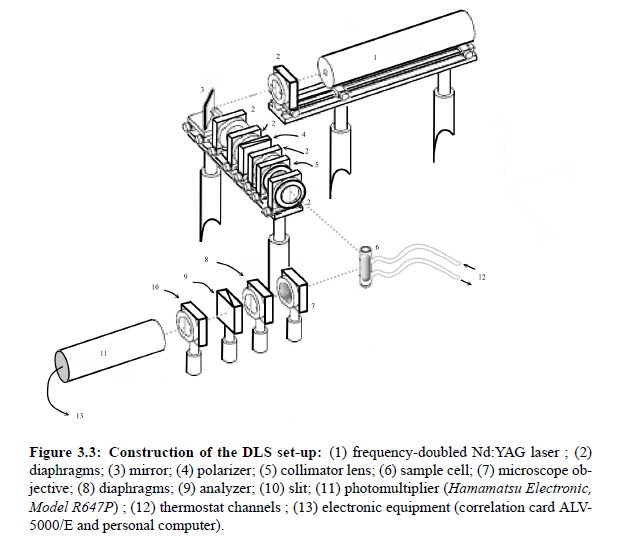2004-(II)-Dynamic light scattering
Article Index
Technical equipment:
A typical dynamic light scattering set-up is presented in Fig.(3.3). A frequency-doubled Nd:YAG laser (1) is used as light source. The laser light passes several diaphragms (2), a polarizer (4) and a collimator lens (5) with focal length f = 100 mm and is then fed to the sample cell (6). The scattered light passes a microscope objective (7), a polarization analyzer (9) and the slit (10) with (d = 200 µm). Finally, the signal is detected by a photomultiplier (Hamamatsu Electronic, Model R647P) (12) that transforms a variation of intensity into a variation of voltage. The spectrometer is provided with a goniometer system which allow superior of scattering angle Θ. The received signal is analyzed with help of a correlation card ALV-5000/E with logarithmic timescale and with 288 channels. In principle it is possible to analyze the autocorrelation function in terms of a superposition of up to four exponentials and thus four correlation times τ . Hence the Rayleigh line
may be considered a sum of up to four Lorentz functions. Combining the correlation time τc with the Eqs.(3.1), (3.22) and (3.17) or (3.18), it is possible to determine the radius r of a particle and thus the correlation length ξ.
- << Prev
- Next
